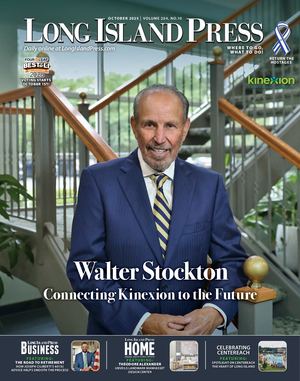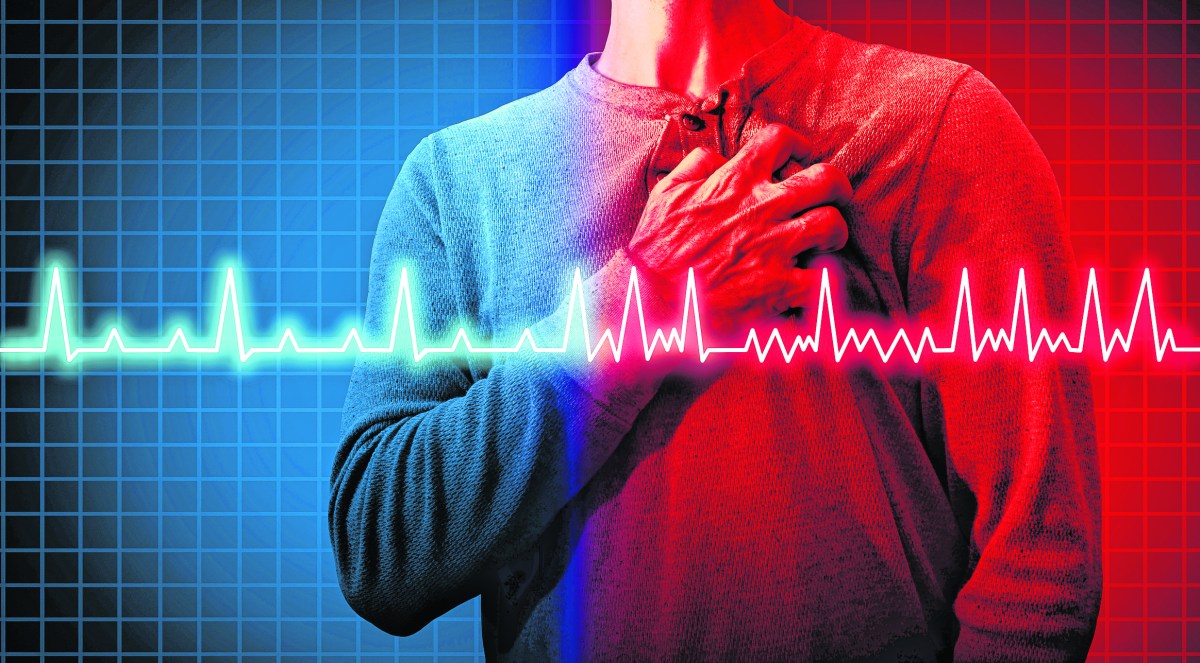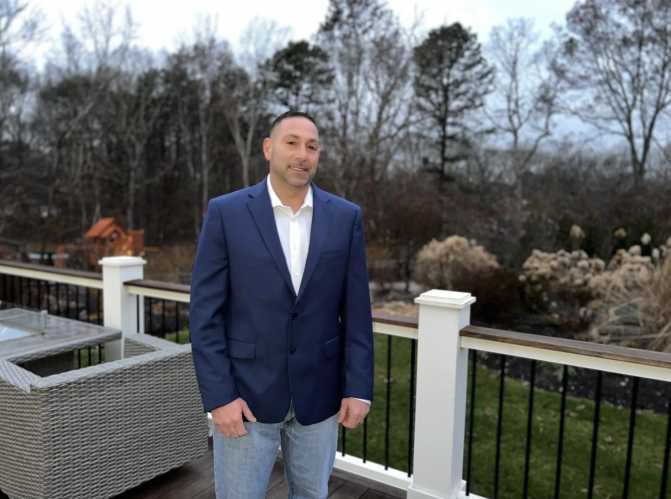Atrial fibrillation (Afib) is a type of cardiac arrhythmia, or abnormal heart rhythm, that is very common — and more prevalent than previously thought. A large study published in October 2024 in a major cardiology medical journal found that Afib affects 10.5 million adults — or about 5% of the U.S. adult population — versus the previous widely used estimate of 3.3 million, which was based on 1990s data.
If left untreated, Afib can lead to stroke, heart failure and premature cardiac death. But fortunately, Afib is treatable and, in some cases, preventable.
“Afib is the leading preventable cause of stroke,” says Dr. Laurence Epstein, system director of electrophysiology for Northwell Health. “The most important reason to treat Afib is to prevent stroke.”
In addition, Afib can cause heart failure and other serious cardiac problems. “Studies have shown Afib can increase risk of cardiac death twofold,” says Dr. Ibrahim Almasry, a cardiac electrophysiologist at the Stony Brook Heart Institute.
WHAT IS AFIB?
The heart has two upper chambers, called atria, which move blood to the lower chambers, called ventricles, which then pump the blood to the lungs and the rest of the body.
Heartbeats are triggered by electrical impulses. A normal heart usually beats between 60 and 100 times per minute when you are at rest. But when you are in Afib, faulty electrical signals make the upper chambers contract chaotically, creating as many as 400 or more beats per minute. This causes the atria to get out of sync with the ventricles and blood to pool in the atria instead of moving into the ventricles to be pushed out to the rest of the body. This pooling increases the risk of blood clots in the heart, which can travel to the brain and cause a stroke.
“The heart is smart enough to not let all those beats get down to the ventricles, but more beats get through than normal, so your heartbeat may be as much as 150 or 170 per minute, causing a rapid, irregular heartbeat, and you may feel fluttering, chest pain or other symptoms,” Epstein says. The rapid, disorganized rhythm of Afib can make it harder for your heart to pump blood, which can lead to heart failure.
RISK FACTORS
Age is the biggest risk factor for Afib, which is particularly common among older adults. Other risk factors include uncontrolled high blood pressure, type 2 diabetes, obesity, coronary artery disease, congenital heart disease, sleep apnea, hyperthyroidism, smoking and excessive use of alcohol. Lifestyle modifications can help prevent Afib.
HOW IS AFIB DIAGNOSED?
Afib can be occasional or constant. It may come and go initially and then become constant over time, Almasry says.
How people experience Afib also varies.
“Some people can have 150 beats a minute and be completely asymptomatic,” Epstein says. “Other people feel every skipped heartbeat, and they may feel short of breath or have trouble exercising.” Other common symptoms include feelings of a fast, pounding heartbeat, called palpitations, chest pain, dizziness, fatigue and lightheadedness.
If you have symptoms of Afib, you should promptly inform your doctor, who can diagnose it with an electrocardiogram (EKG), a quick test that is typically part of an annual health checkup. But as Afib can come and go, an EKG misses it in many patients. When doctors suspect Afib, they may send patients home with a Holter monitor or other devices to record the heart’s activity over a couple of days or longer.
Increasingly, people are first alerted of potential Afib by a smartwatch or Fitbit, which can detect abnormal heart rhythms. There are also at-home devices, such as those made by Kardia, that are used to specifically check for Afib.
“There are a lot of consumer-targeted devices now that try to detect Afib,” Almasry says. “They vary in sensitivity and are not considered to be medical-grade devices, but patients can bring that information to their doctors to be corroborated.”
People with Afib should know the warning signs of a heart attack or stroke and call 911 if they experience the warning signs. According to the American Heart Association, heart attack warning signs include chest discomfort that lasts more than a few minutes, pain or discomfort in the upper body and shortness of breath. Other signs of a heart attack can include breaking out in a cold sweat, nausea, rapid or irregular heartbeat, unusual fatigue and lightheadedness. Stroke warning signs include face drooping or numbness, weakness or numbness in an arm and speech difficulty, according to the AHA.
AFIB TREATMENT
“Just like with conditions like high blood pressure or cancer, the sooner you intervene with Afib, the better the patient does over the long term,” Almasry says.
Some patients are treated with anti-arrhythmic medications to control their heart rhythm. “Some of these medications are more effective than others,” Almasry says. “Some have more side effects than others, and some are not indicated for some patients.”
Ablation, a minimally invasive procedure, has emerged as a first-line therapy. “Ablation is a very effective therapy, and because of advances in the technology, it has become very safe,” Almasry says. With traditional ablation technologies, which used heat or cold energy, there was a risk that other structures near the heart could be damaged during the procedure. However, the latest technology, pulse field ablation (PFA), uses high-energy electric pulses to more effectively target cardiac tissue while sparing nearby tissue. “The hope after this procedure is that the patient will have less or no Afib, and the goal of ablation is to eliminate the need for anti-arrhythmic drugs,” Almasry says.
To reduce the risk of strokes, Afib patients may also be prescribed anti-coagulants, or blood thinners, such as Eliquis or Xarelto.
“There’s a stroke risk scoring system called the CHA2DS2-VASc scale,” which looks at risk factors such as age and comorbidities, Epstein says. “If you score 2 or more, you need to be treated to prevent stroke. A score of 1 is borderline.”
Patients who can’t tolerate or don’t want to take blood thinners may be offered a procedure to seal off the opening to the left atrial appendage, where 90% of Afib-related blood clots form. This prevents any clots that form from entering the bloodstream, therefore reducing the risk of stroke.
Medications known as beta blockers and calcium channel blockers may also be used to slow the heart rate.
“As people are living longer, Afib is becoming more common,” Epstein says. “The takeaway message is not to freak out, but to be alert to any symptoms that may indicate Afib and get them checked out.”































